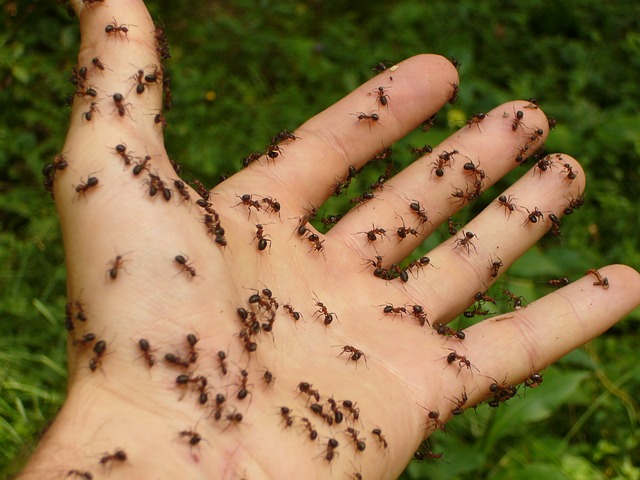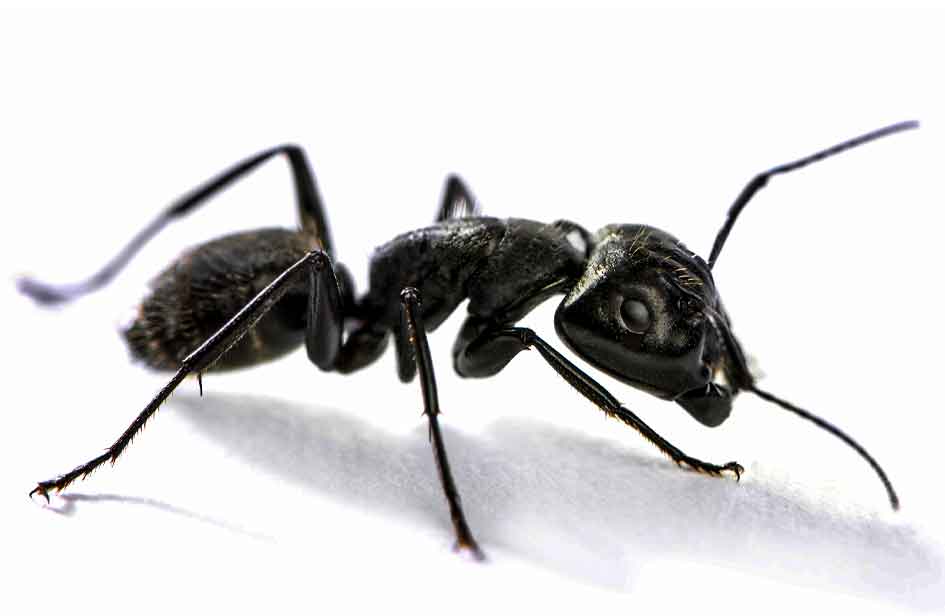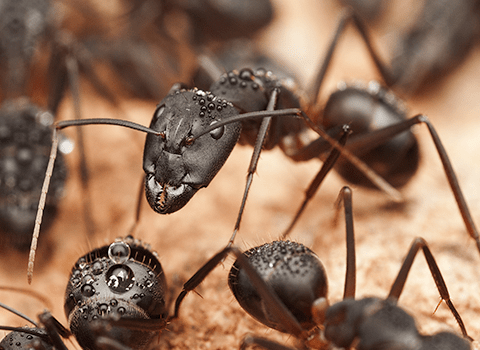Ants can be harmful if they invade homes or cause structural damage. Certain species can also bite or sting, leading to allergic reactions.
Ants are an essential part of the ecosystem, known for their industrious nature and complex social structures. Despite their ecological benefits, they sometimes conflict with human interests. Households may struggle with ant infestations, which can result in contaminated food and damage to property, particularly by species like carpenter ants that burrow into wood.
In outdoor settings, ant activities can disrupt gardens and lawns. Some tropical ant species possess painful stings or bites that can pose health risks to individuals, especially those with allergies. Effectively managing ant populations in and around homes ensures safety and comfort, highlighting the need for practical pest control solutions. The presence of ants prompts a closer look at sanitation, home maintenance, and professional extermination when necessary.

Credit: www.pestdefence.co.uk
Misconceptions About Ants
Misconceptions about ants often lead to unwarranted fear and unnecessary pest control measures. Ants have roles in nature and aren’t always the nuisance we label them to be. It’s time to bust some of the common myths and understand the real impact of ants on our lives and environment.
Common Fear Vs. Facts
Many people believe ants are harmful pests. The truth varies widely depending on the ant species.
- Fire ants can sting and may be problematic.
- Other species, like carpenter ants, might damage wood.
- Most ants, however, are harmless and can benefit our homes by eating other pests.
Ants can bite or sting, but this is rarely a danger to humans. The pain is usually minimal and temporary.
Ants In Ecosystems
Ants play a crucial role in our ecosystems. They maintain soil health and aid in decomposition.
| Role of Ants | Benefits to Ecosystem |
|---|---|
| Aerating soil | Improves plant growth |
| Spreading seeds | Supports plant diversity |
| Feeding on pests | Controls insect populations |
By contributing to a balanced ecosystem, ants support the health of our planet. Understanding these facts helps us foster a respectful coexistence with these small but mighty creatures.
Ants At A Glance
Welcome to “Ants at a Glance”, a closer look at these tiny creatures that are much more than picnic invaders. Let’s uncover the layers of ant life and understand their role in our ecosystem.
Species Variety
Ants come in over 12,000 varieties. They live almost everywhere on Earth. From rainforests to deserts, ants have conquered every land. Here’s a quick look at their diversity:
- Leafcutter ants: They grow fungi on leaves for food.
- Fire ants: Known for their painful sting.
- Weaver ants: They build nests using silk.
Physical Characteristics
Despite their size, ants are complex. Ant body parts include the head, thorax, and abdomen. A table to illustrate this:
| Body Part | Features |
|---|---|
| Head | Antennae and jaws |
| Thorax | Six legs and muscles |
| Abdomen | Organs and stinger in some |
Ants communicate with pheromones. This chemical language helps ants find food and warns them of danger. Ant colors vary from red to black, adapting to their environment for survival.
Positive Roles In Nature
Ants do more than just march to your picnic. They play key roles in nature. As tiny as they are, ants are mighty workers of the Earth. Let’s explore how these little creatures positively impact our environment.
Soil Aeration
Ants are like tiny farmers for the Earth. As they dig tunnels, they let air and water reach plant roots. This helps plants grow healthy and strong. The tunnels also make soil looser, so roots can spread out more easily. Ants move a lot of soil, making them powerful garden helpers.
- Digging tunnels: improves oxygen for roots.
- Mixing soil layers: boosts nutrient access.
- Loosening soil: easier for roots to grow.
Seed Dispersal
Ants are unsung heroes in spreading plant seeds. They carry seeds to their nests. Some seeds are left uneaten and sprout new plants. This helps plants spread out and grow in new areas. This ant behavior is essential for forest renewal and plant diversity.
| Action | Benefit to Nature |
|---|---|
| Carrying seeds | New plant growth |
| Leaving seeds in soil | Forest and meadow renewal |
| Eating seeds | Soil enrichment |
These roles show that ants are friends to our ecosystem. Without them, the Earth wouldn’t be as green and vibrant as we see it today.
Negative Aspects
Exploring the negative aspects of ants is vital. Often seen as harmless creatures, they can cause real issues. Let’s delve into the damage and health risks they pose.
Property Damage
Ants are mighty builders. Their talent can lead to trouble for homeowners.
- Ant nests disrupt the soil, affecting home foundations.
- Carpenter ants hollow out wood to make their homes.
- These actions can cause serious structural damage over time.
Health Risks
Ants pose several health risks. It’s essential to recognize them.
| Ant Type | Risks |
|---|---|
| Fire ants | Can sting and trigger allergic reactions. |
| Pharaoh ants | Spread diseases like salmonella. |
Keeping food sealed and surfaces clean helps to reduce health risks.
Nuisance In Homes
When we think of pests in our homes, ants often top the list. These tiny creatures can create big headaches for homeowners. They invade in search of food, water, and shelter, turning your home into their own. Let’s delve into the problems ants cause, particularly focusing on food contamination and electrical issues.
Food Contamination
Ants are notorious for invading kitchen spaces. An ant’s quest for sustenance can lead them into food storage areas. They can spread germs across surfaces and into your food.
How do ants contaminate food? Simple. They travel through unsanitary areas before arriving in your kitchen. Here’s what can happen:
- Transfer of bacteria – Ants can spread bacteria like E. coli and Salmonella.
- Potential health risks – Consuming contaminated food can lead to illness.
- Pheromone trails – Ants leave invisible trails that lead more ants to your food.
Electrical Problems
What’s worse than ants in your pantry? Ants in your electronics. It’s less known, but ants can cause serious damage to electrical systems. Some species are attracted to the warmth of electrical components, and here’s what they can do:
| Electrical Issue | Possible Consequences |
|---|---|
| Chewing on wires | Short circuits, fire hazards |
| Nesting inside devices | Device malfunction, costly repairs |
To keep ants away from your electrical devices, it’s important to regularly inspect and maintain your wiring and appliances. Look for signs of ant infestations and take immediate action if you spot them.

Credit: www.evanspestmgmt.com
Managing Ant Infestations
An ant infestation can turn from a minor annoyance to a major problem. Immediate action may stop them from taking over your space. Let’s explore safe and effective ways to clear these tiny invaders from your home.
Natural Remedies
- Diatomaceous earth: Sprinkle this fine powder where ants enter. It’s safe for pets and kids.
- Vinegar solution: Mix equal parts water and vinegar. Use it to wipe down surfaces. Ants hate its smell.
- Lemon juice: Its acidic property masks scent trails. Spray around entry points.
- Peppermint oil: A natural insect repellent. Put a few drops on a cotton ball near access points.
- Borax and sugar traps: Mix borax with sugar to lure ants. Use small containers for bait. Keep away from children and pets.
Professional Pest Control
Severe infestations require professional help. Experts know how to find and destroy ant colonies safely. Here’s a concise guide:
| Professional Service | Benefit | Safety |
|---|---|---|
| Inspection | Identifies ant species and nests | Experts ensure family and pet safety |
| Treatment plan | Custom solutions for your home | Use of chemicals in a controlled manner |
| Follow-up | Checks to prevent future issues | Continued peace of mind |
Remember, regular maintenance keeps your home ant-free. Identify and seal entry points. Clean spills instantly. Store sweets and starches properly.
Preventing Ant Problems
Welcome to our section on Preventing Ant Problems. Ants may seem harmless but can become pests. Let’s tackle how to keep them at bay!
Sanitation Practices
Clean surroundings discourage ant invasions. Here are key steps:
- Wipe surfaces after meals to remove crumbs and spills.
- Keep food in sealed containers—ants love easy snacks.
- Take out trash regularly, especially if it contains food waste.
- Use ant repellents near entry points without harsh chemicals.
Landscape Management
Outdoor practices are vital. Keep ants out with these tips:
- Prune overhanging trees and shrubs, preventing ant pathways into your home.
- Regularly mow your lawn and keep it free from debris.
- Use mulch wisely—it can shelter ants.
- Fix water leaks to avoid moist environments where ants thrive.
Fascinating Ant Behaviors
Ants are not just tiny creatures roaming around your picnic spot. These insects lead intricate and structured lives that pique the curiosity of scientists and observers alike. Let’s dive into some “Fascinating Ant Behaviors” that showcase their incredible societal structure and communication skills.
Complex Colonies
Ant societies are a marvel of nature’s engineering. At the heart of their world, complex colonies emerge. Each colony functions like a well-oiled machine with clear roles and responsibilities.
- Worker ants maintain the nest, collect food, and care for the young.
- Soldier ants protect the colony, equipped with strong mandibles.
Colonies can house thousands, even millions, of ants. All are descendants of one queen, the mother of the entire colony.
Communication Methods
Ant communication is a fascinating dance of chemicals and body language. They use pheromones to send messages to their peers, creating invisible trails to food sources or signaling danger.
| Type of Signal | Function |
|---|---|
| Pheromone Trail | Navigate to food sources |
| Alarm Pheromone | Alert colony to threats |
| Tandem Running | Guide ants to new locations |
Antennae tapping and vibrations are also part of their intricate communication system. Such methods reflect ants’ advanced abilities to work together for colony success.
Ants And Biodiversity
Ants play a pivotal role in the fabric of life, intricately woven into the tapestry of biodiversity. These tiny creatures, often overlooked, are guardians of soil health and nutrient cycling. Ants contribute greatly to the balance of ecosystems around the world.
Ants As Bioindicators
Ants act as bioindicators, proving to be a valuable asset for scientists. By observing ant populations and their behaviors, we gain insight into ecological changes. This helps monitor environmental quality. Biodiversity hotspots often showcase a diverse array of ant species. Parents, take your kids out to explore the backyard, and you might find these natural indicators of a healthy environment.
Conservation Efforts
Conservationists recognize the importance of ants in sustaining ecosystems. To protect ant habitats, numerous conservation efforts are in place. These include establishing reserves and implementing land management practices favoring biodiversity. Support for ant conservation ideally leads to wider ecological benefits. This table highlights key conservation strategies:
| Strategy | Benefit |
|---|---|
| Preserve Ant Habitats | Maintains Ecosystem Services |
| Environmentally Friendly Farming | Protects Biodiversity |
| Educational Programs | Raise Awareness |

Credit: americanpest.net
Frequently Asked Questions For Is Ant Harmful?
Can Ants Cause Structural Damage?
Absolutely. Some ant species, particularly carpenter ants, can cause structural damage. They excavate wood to create nests, compromising the integrity of wooden structures over time.
Are Ants Dangerous To Humans?
Ants generally pose little danger to humans. However, some species can bite or sting, causing discomfort. Fire ant stings, for instance, can be painful and potentially trigger allergic reactions in sensitive individuals.
How Do Ants Affect Household Environments?
Ants can contaminate food by carrying bacteria. Their presence can also signal an underlying issue, such as excess moisture, which may attract them to your home.
What Attracts Ants Inside Homes?
Ants are often drawn to homes in search of food, water, and shelter. Spilled sweets, pet food, and unsealed pantry items are common attractants. Eliminating these readily available resources can help deter them.
Conclusion
Understanding ant behavior is key to coexisting with these industrious creatures. While they can be pests, they’re often harmless and ecologically beneficial. Recognizing the role and impact of ants is crucial for a balanced perspective. Remember, proper management is essential to prevent any potential harm from our tiny neighbors.

I’m MD Tanvir, and I bring years of expertise gained from working closely with pest control companies to the forefront. My journey in the industry has inspired me to launch Bug Battler, a platform aimed at equipping people with the know-how to combat pests autonomously. Through Bug Battler, I aim to empower individuals with practical insights to tackle pest infestations effectively.

